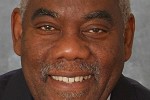By Dr Selwyn R. Cudjoe
September 18, 2024
PART II
 In 1962 when Trinidad and Tobago went into business as a nation, it formed a committee “to select the symbols that would be representative of the people of Trinidad and Tobago”. It produced our coat of arms.
In 1962 when Trinidad and Tobago went into business as a nation, it formed a committee “to select the symbols that would be representative of the people of Trinidad and Tobago”. It produced our coat of arms.
Those representative symbols consisted of a palm tree at the top that was taken from Tobago’s coat of arms (Tobago was annexed to Trinidad in 1889), three gold ships that Columbus is reputed to have used when he visited (or saw the island in 1498), two hummingbirds (Trinidad was sometimes referred to as the “Land of the Hummingbird”), and its motto, “Together we aspire, Together we achieve.”
Today, a certain segment of the community finds the three ships unacceptable, given Columbus’ role in the annihilation of many of the First People of the island and the harm he did to the indigenous people of the other Caribbean islands. They suggest that the three ships should be replaced by the pan, the national instrument.
Two questions arise: is the pan the most representative symbol of who and what we are as a nation in 2024? Shouldn’t we include other symbols in any newly-configured national narrative?
We have been trying to form a unified national entity since the inception of our nation; hence the words of our national motto. On the night of our Independence, our first prime minister Dr Eric Williams declared, and I abbreviate it a bit, “There can be no Mother India…no Mother Africa…no Mother England…[and no] Mother China…A nation, like an individual, can only have one Mother.”
Part of the challenge to that ideal was, and still remains, how do we achieve that goal?
Inherent in that speech was the notion that while each ethnic group possesses a loyalty to its group, we would have to submerge those differences and congeal into one nation.
The hidden aspect of that text was that although we strive toward national unity, we could not but respect and respond to our ethnic imperatives—historical, cultural, religious and social.
In his Independence Day address, Williams emphasised: “Our National Flag belongs to all our citizens. Our National Coat of Arms, with our National Birds inscribed therein, is the sacred thrust of our citizens,” which suggests the national coat of arms does not belong to any one group.
So even though this coat of arms may be imperfect in light of present realities, it redounds to all of us to fix it. In fixing it, we must include symbols of the varied strands of the nation.
Visually, the coat of arms must represent the sentiments of all the groups. It must be a national coat of arms rather than the ethnic-slanted effusion of pride of one group, no matter how heartfelt those sentiments may be.
Our pan came out of the tamboo bamboo, an African-inspired musical art form. A lot of human ingenuity and an understanding of physics went into its making.
Although most Trinbagonians take pride in that achievement, we know the pan was forged out of the black struggle for identity. While the pan should be enshrined on any emblem that seeks to embody our national identity, symbols of the other groups should be etched into that emblem as well.
Africans are approximately one-third of our population—the addition of the pan might be one of the symbols. A symbol of the Indo-Trinbagonian presence, either the tassa or the Fatel Razack, the first ship that brought Indians to Trinidad, might also be included in the national coat of arms.
An additional symbol, representing the next third of our people, might also be included. Although we may not now know what that ought to be, it is something we must explore after national discussion on all of these symbols. Adding two other symbols would help to represent the blended nature of our society.
In reframing our national narrative via the national coat of arms, we should aim at inclusion rather than exclusion.
Apart from the Afrocentric dimension, there should be a multiplicity of images so that we all can see ourselves in that iconic image of our nation.
Our national coat of arms should be a visual image of a multicultural people seeking to harmonise their varied interests. It remains a part of our continuing quest to achieve a sense of nationhood.
Our national anthem, another symbol of our country’s strivings, seeks to instil feelings of patriotism and pride in our citizens. It insists: “Here every creed and race find an equal place.”
If we believe in those sentiments, there should be no problem in demanding that our national coat of arms include the multifarious dimensions of our society. It may well be one of the most significant challenges of our time and space.
